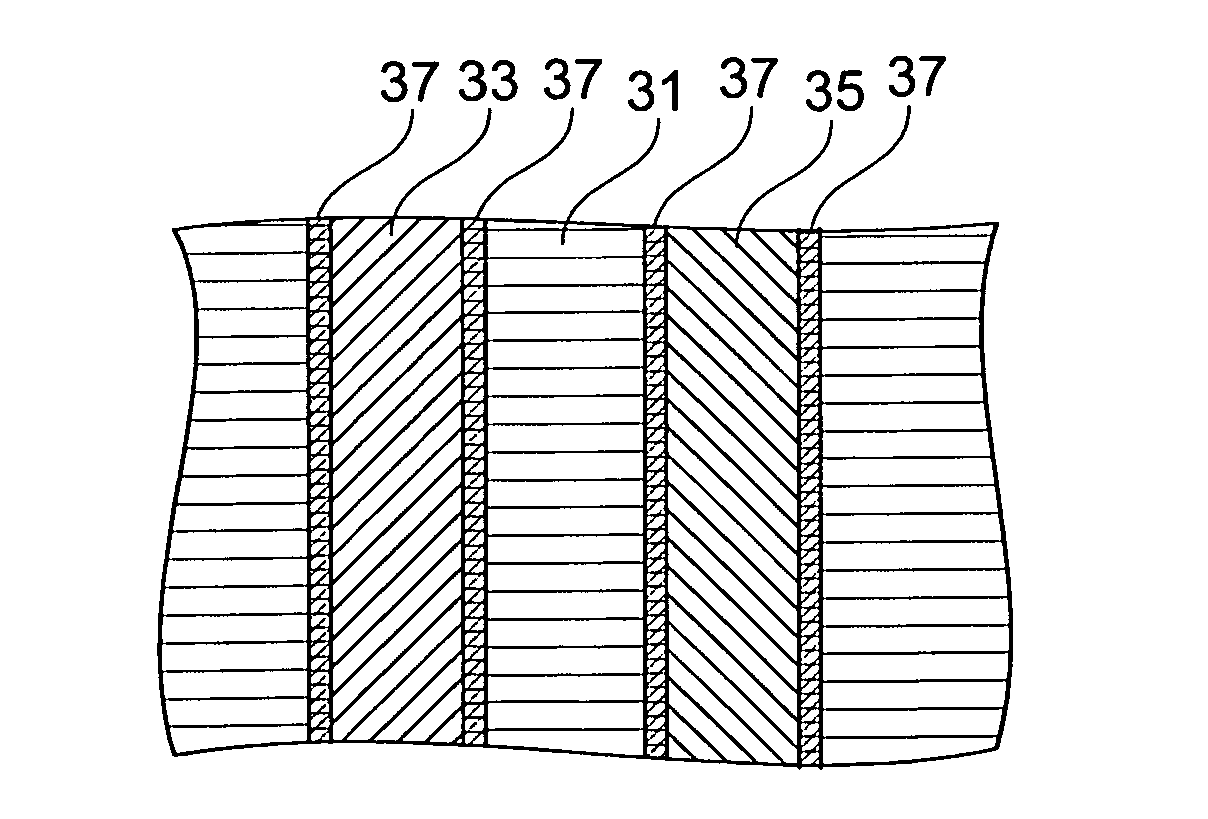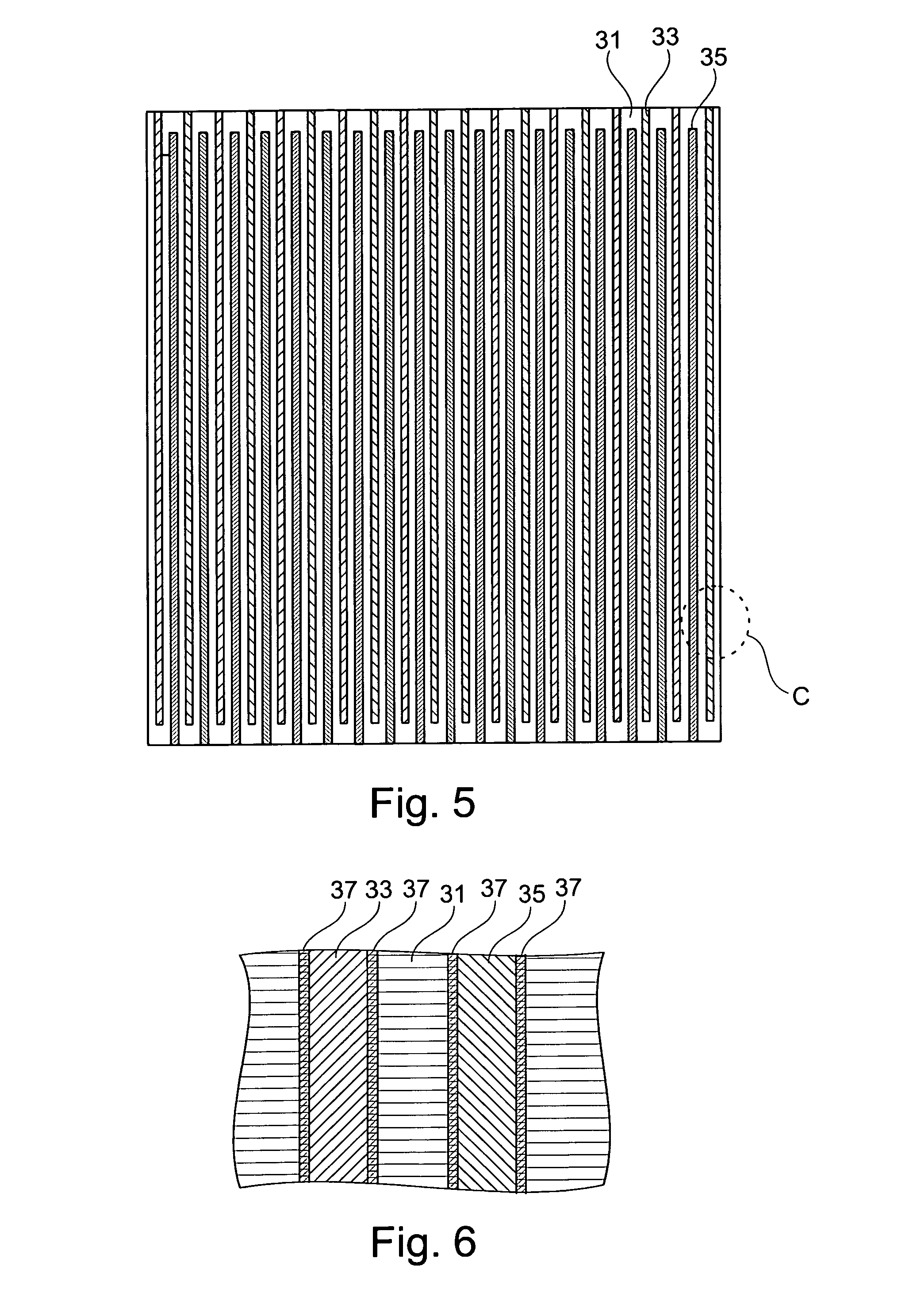Solar cell and method for producing same
a solar cell and cell technology, applied in the field of solar cells and methods for producing same, can solve the problems of lack of cheap mass, use of expensive photolithography processing steps,
- Summary
- Abstract
- Description
- Claims
- Application Information
AI Technical Summary
Benefits of technology
Problems solved by technology
Method used
Image
Examples
Embodiment Construction
[0060]An objective of embodiments of the present invention is to provide a cost effective, industrially applicable method for fabricating back-contacted silicon heterojunction intrinsic-thin layer solar cells, and a detailed solar cell design adapted to and resulting from such a fabricating method.
[0061]In the back-contacted silicon heterojunction intrinsic-thin layer solar cells, the intrinsic layer has to be thin enough to allow tunnelling, but thick enough to passivate the adjacent silicon surface. This means that both a very low defect density and an absolute thickness control are essential. Any method that allows depositing the intrinsic layer for the entire rear surface in one go therefore has huge benefits for ease of optimization and process control in production, and is likely to have a higher maximum efficiency potential.
[0062]All existing methods for producing similar solar cells include etching through, and partially rebuilding this layer, or etching down to the layer, w...
PUM
 Login to View More
Login to View More Abstract
Description
Claims
Application Information
 Login to View More
Login to View More - R&D
- Intellectual Property
- Life Sciences
- Materials
- Tech Scout
- Unparalleled Data Quality
- Higher Quality Content
- 60% Fewer Hallucinations
Browse by: Latest US Patents, China's latest patents, Technical Efficacy Thesaurus, Application Domain, Technology Topic, Popular Technical Reports.
© 2025 PatSnap. All rights reserved.Legal|Privacy policy|Modern Slavery Act Transparency Statement|Sitemap|About US| Contact US: help@patsnap.com



